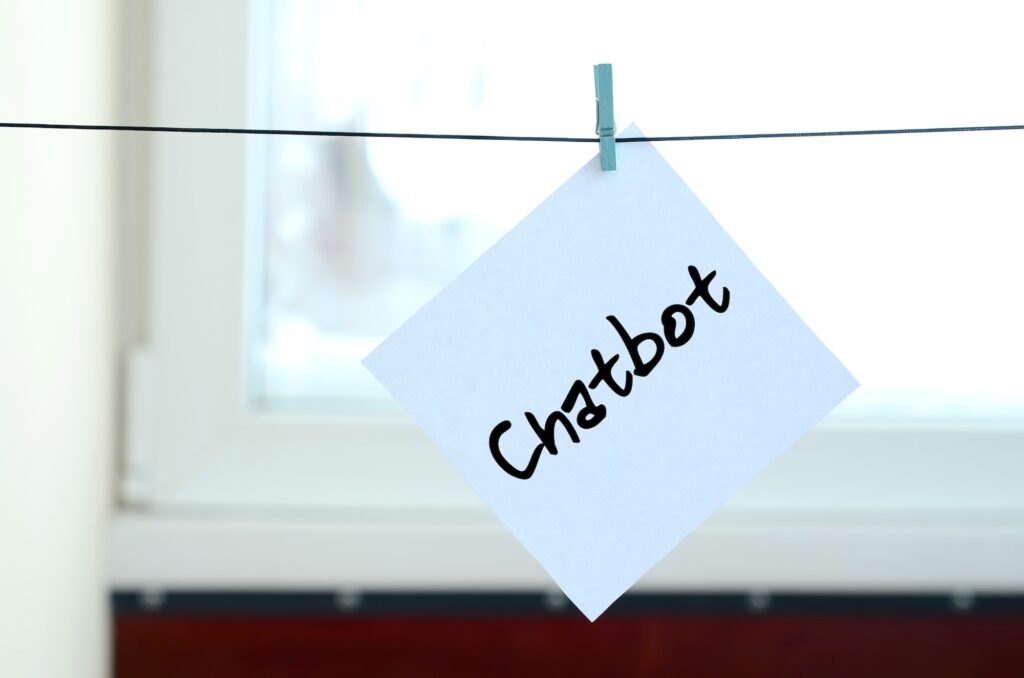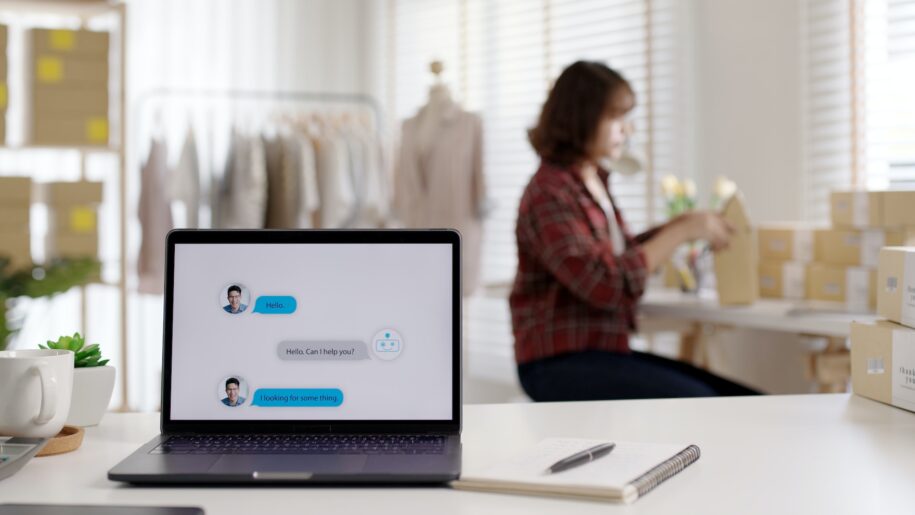Introducing chatbots
Welcome to the world of chatbots in 2023! Chatbots are rapidly transforming the way businesses interact with their customers, providing a seamless and convenient experience. These computer programs use artificial intelligence (AI) and natural language processing (NLP) to simulate human-like conversations and assist customers with their queries.
In recent years, chatbots have gained significant popularity in various industries such as healthcare, e-commerce, banking, and customer service. With advancements in AI, chatbots are becoming increasingly sophisticated, and their capabilities are expanding beyond simple question-answering. Today’s chatbots can handle complex tasks, such as scheduling appointments, making purchases, and providing personalised recommendations.
The use of chatbots is not only limited to businesses; they are also becoming more prevalent in our everyday lives. From virtual assistants like Siri and Alexa to chatbots on messaging platforms like Facebook Messenger and WhatsApp, chatbots are becoming ubiquitous.
Chatbots have many benefits, including 24/7 availability, fast response times, and cost-effectiveness. They also provide a personalised experience, as they can remember past conversations and tailor responses to individual customers.
However, the rise of chatbots has also raised concerns about privacy and security. As chatbots become more sophisticated, they collect and store more user data, raising questions about how this information is used and protected.
In this article, we will explore everything you need to know about chatbots in 2023, from their history to their current state and future trends. We will also examine the benefits and drawbacks of using chatbots and address the concerns surrounding privacy and security. By the end of this article, you will have a comprehensive understanding of these bots and how they are transforming the way we interact with technology.
Their history
Chatbots have been around for decades, and their history dates back to the mid-20th century. The first chatbot, known as ELIZA, was created in the 1960s by Joseph Weizenbaum at the Massachusetts Institute of Technology (MIT). ELIZA was a simple program that used pattern matching and pre-scripted responses to simulate human-like conversation. It was designed to imitate a psychotherapist and could ask and answer questions about a patient’s emotional state.
In the 1980s, the first commercial chatbot was developed by the company, Dr. Sbaitso. The program was marketed as a virtual therapist and was intended to help people deal with emotional and mental health issues. However, the technology was still in its infancy, and the chatbot’s responses were limited to a set of pre-written scripts.
In the late 1990s and early 2000s, the rise of the internet led to the development of more advanced chatbots. One notable example is SmarterChild, which was launched in 2001 and available on popular instant messaging platforms like AIM and MSN Messenger. SmarterChild used AI and NLP to provide personalised information and services such as weather updates, movie recommendations, and even jokes.
As technology continued to evolve, so did chatbots. In 2011, Apple launched Siri, a voice-activated personal assistant that used natural language processing to understand and respond to user queries. Siri was a game-changer and popularised the use of these bots in everyday life.
Since then, chatbots have become increasingly sophisticated, with businesses using them to provide better customer service, automate tasks, and increase efficiency. Today’s chatbots use advanced AI and machine learning algorithms to understand natural language and provide personalised responses. They can be found on messaging platforms, websites, and mobile apps and are changing the way we interact with technology.

What are the benefits of chatbots?
Chatbots offer numerous benefits for businesses and consumers alike.
Here are some of the key advantages of using chatbots:
- 24/7 Availability: Can operate 24/7, providing customers with round-the-clock support and service. This means that businesses can offer assistance and resolve queries outside of regular working hours, increasing customer satisfaction and loyalty.
- Fast Response Times: Can process queries and provide responses in real-time, reducing wait times and improving the customer experience. This can lead to higher customer retention rates and increased sales.
- Cost-Effective: Can handle a large volume of queries simultaneously, reducing the need for human customer support representatives. This can result in significant cost savings for businesses, especially in industries with high customer service volumes.
- Personalised Experience: Can provide a personalised experience by using customer data to tailor responses and recommendations. This can help businesses build stronger relationships with their customers and increase customer loyalty.
- Increased Efficiency: Can automate tasks such as scheduling appointments, making reservations, and processing payments, freeing up human staff to focus on more complex and strategic tasks.
- Multichannel Support: Can be integrated into multiple channels such as websites, mobile apps, and messaging platforms, providing a seamless and consistent experience for customers.
- Scalability: Can handle an infinite number of queries simultaneously, making them an ideal solution for businesses that experience spikes in customer service volumes.
Chatbots offer businesses and consumers a wide range of benefits, including increased efficiency, cost savings, and improved customer satisfaction. As the technology continues to evolve, we can expect chatbots to play an even greater role in transforming the way we interact with technology and each other.
What are the drawbacks of chatbots?
Chatbots have become increasingly popular in recent years as they offer an efficient and cost-effective way for businesses to communicate with their customers. However, like any technology, they are not without their drawbacks. Here are some of the most common drawbacks of chatbots:
- Limited understanding of context: Rely on pre-programmed responses and are not always able to understand the nuances of human conversation. This can lead to frustration and miscommunication, especially if the user asks a question that the chatbot is not able to comprehend.
- Inability to handle complex queries: While chatbots can handle basic queries, they often struggle with more complex questions or issues that require human intervention. This can lead to a frustrating experience for the user, who may feel that their query is not being addressed properly.
- Lack of empathy: Are not able to display empathy in the same way that a human customer service representative can. This can be a drawback when dealing with sensitive issues or emotional customers.
- Limitations in language comprehension: Chatbots are limited by the language that they are programmed in and may not be able to understand dialects or slang that are specific to certain regions or cultures.
- Lack of personalisation: While chatbots can provide basic information and assistance, they are not able to offer the same level of personalisation that a human customer service representative can. This can be a drawback for businesses that are looking to build strong relationships with their customers.
- Dependence on technology: Chatbots are reliant on technology, which means that they are susceptible to glitches, downtime, and other technical issues. This can result in a poor user experience and frustration for both the user and the business.
- Inability to handle unexpected situations: Are programmed to respond to specific queries and are not able to handle unexpected situations that may arise during a conversation. This can lead to confusion and frustration for the user, who may feel that their issue is not being addressed properly.
While chatbots have many benefits, they are not without their drawbacks. Businesses that choose to implement chatbots should be aware of these limitations and should consider them when designing their chatbot strategy. Ultimately, the key to success with chatbots is finding the right balance between automation and human interaction.
Closing thoughts
Chatbots have come a long way since their inception, and they continue to evolve and improve in 2023. As businesses look for ways to streamline their operations and provide better customer service, chatbots are becoming an increasingly popular solution.
They offer numerous benefits, including 24/7 availability, increased efficiency, and cost savings. They can also provide personalised assistance and help businesses build stronger relationships with their customers.
However, they are not without their drawbacks. They have limitations in their ability to understand context, handle complex queries, display empathy, and provide personalised assistance. They also rely on technology and are susceptible to glitches and downtime.
To get the most out of chatbots, businesses need to strike the right balance between automation and human interaction. By designing a chatbot strategy that takes into account the strengths and weaknesses of chatbots, businesses can provide better customer service while improving their operational efficiency.
Overall, chatbots are an exciting technology that continues to improve and offer more value to businesses and customers alike. As we move into 2023, it will be interesting to see how businesses continue to leverage this technology to improve their operations and provide better customer experiences.
Check out this video on building a lead generation funnel with chatbots: https://www.youtube.com/watch?v=cFToH8IVRUI

Leave a Reply